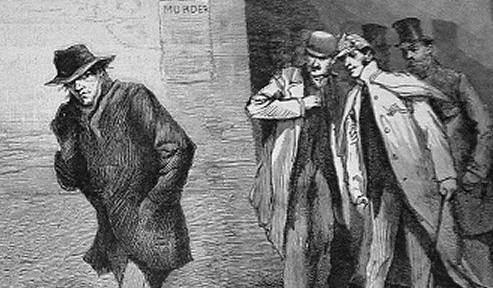Jack the Ripper: A wrongful conviction based on flawed DNA analysis
Jayme Blaschke | September 26, 2019

Research published in the Journal of Forensic Sciences claiming to identify the notorious 19th century murderer through DNA analysis grabbed headlines around the world in the spring of 2019.
Careful analysis by Kim Rossmo, a research professor in the School of Criminal Justice at Texas State University, questioned the investigative logic of the study and concludes it was a forensic failure. He recently completed a major research project on the systemic causes of wrongful convictions, funded by the National Institute of Justice, and noticed many of the same problems in the Ripper paper.
"The underlying errors in reasoning and logic here—tunnel vision, suspect-based focus, confirmation bias, uncritical acceptance of assumptions, unreported error rates, and probability mistakes—are the same ones commonly found in wrongful convictions and other criminal investigative failures," Rossmo said. His commentary is published in the current edition of the Journal of Forensic Sciences (https://onlinelibrary.wiley.com/doi/10.1111/1556-4029.14191).
Rossmo, a retired Canadian police detective inspector, has long been a student of the Jack the Ripper case. He previously examined it from the perspective of a geographic profiler, determining through mathematical modeling that the killer likely lived close to the notorious Flower and Dean Street (http://www.txstate.edu/gii/projects/jack-the-ripper.html).
The problems Rossmo identifies in the DNA research include:
- DNA samples were recovered from a shawl, purportedly found at the murder scene of Jack the Ripper's fourth victim, Catherine Eddowes. However, the shawl is not referenced in any investigation reports from the era, and the researchers fail to establish its provenance.
- Stains on the shawl are identified as blood from the victim and semen from the killer, although neither claim is scientifically established by the researchers, and there is no evidence of sexual activity associated with any of the Jack the Ripper murders.
- Mitochondrial DNA testing is used to identify "Aaron Kosminski" as the killer, although this type of genetic marker, which can only be passed on through maternal lineage, is not a unique identifier. While mtDNA testing can be used to eliminate suspects, it cannot implicate them.
- The researchers argue that a "Kosminski," first identified as a suspect by the London Metropolitan Police (but with no first name recorded), is actually "Aaron Kozminski," an inmate of Colney Hatch Asylum, despite conflicting biographical records for the two men.
"Tunnel vision involves a narrow focus on a single theory, such as the exclusive targeting of Kosminski for the mitochondrial DNA test, and can lead to a premature shift from an evidence-based to a suspect-based investigation," Rossmo said. "Confirmation bias, a type of selective thinking, then becomes a problem. Human inclination is to confirm our theories by seeking out supporting information, interpreting ambiguous information as backing our beliefs, and minimizing inconsistent information."
Share this article
For more information, contact University Communications:Jayme Blaschke, 512-245-2555 Sandy Pantlik, 512-245-2922 |